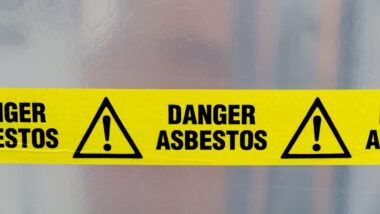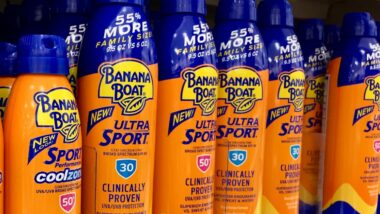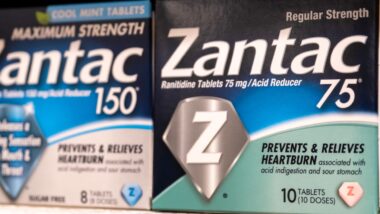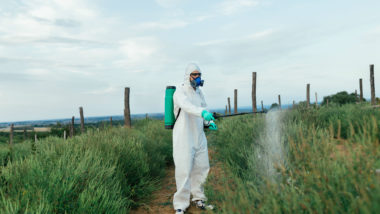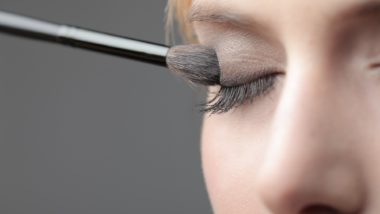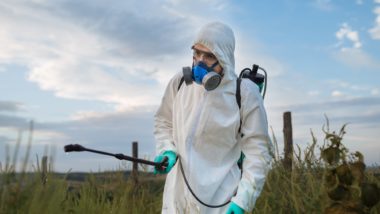Top Class Actions’s website and social media posts use affiliate links. If you make a purchase using such links, we may receive a commission, but it will not result in any additional charges to you. Please review our Affiliate Link Disclosure for more information.
Creosote is a mixture of carbon-based chemicals based that are formed by distilling the tars of various plant-based materials, including wood or coal. Creosote is used as a preservative, like that found in railroad work, and in some cases pesticides.
There are multiple types of creosote. Wood creosote is a greasy liquid that can be colorless or yellow. It has a smoky odor and a burned taste, notes the Agency for Toxic Substances & Disease Registry. Coal tar creosote is black to amber in color and is thick and oily. Coal tar and tar pitch are black or dark brown and can be liquid or semisolid. They also have a smoky odor.
Of these two varieties, coal tar creosote is more toxic. Wood-tar creosote was once used to preserve meat, hence the word’s origin (ultimately taken from the Greek “kreyo,” meaning flesh, and “soeter,” meaning preserver).
What Chemicals Are Found in Creosote?
While the chemical contents of creosote can vary according to type, common ingredients include:
- Cresols: a group of naturally-occurring and synthetic chemicals also found in motor vehicle exhaust, coal-fired furnaces and wood-burning stoves or fireplaces, and tobacco smoke
- Phenol: a synthetic chemical used in the manufacture of nylon and other products
- Polycrylic aromatic hydrocarbons: a byproduct resulting from the burning of fossil fuels
How is Creosote Used?
Coal tar and coal tar pitch are usually used in construction for purposes like road paving, roofing, and aluminum smelting. Coal tar products are used medicinally, to treat some skin conditions. They are also used for bird and animal repellents and are used as both pesticides and fungicides.
In the past, wood creosote was used to treat coughs and constipation and as a disinfectant. It has been used as a wood preservative since the mid-1800s, according to the U.S. Environmental Protection Agency (EPA).
Is Exposure to Creosote Safe?
Exposure to creosote may cause a range of health problems, such as cancer in railroad workers.
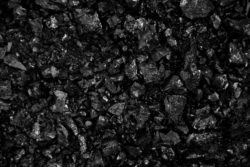
Exposure to creosote in the form of vapors can cause respiratory tract irritation. Consuming the product in large amounts can cause stomach pains and burning in the mouth and throat. Using herbal remedies that contain creosote can cause liver damage.
Exposure to large amounts of coal tar creosote may irritate the skin and eyes. It may also cause someone to convulse or lose consciousness. It may also be fatal.
How Do I Know I’ve Been Exposed to Creosote?
In addition to the aforementioned symptoms (skin, eye, and respiratory irritation), there are medical tests that can detect the presence of creosote in bodily tissues, including internal organs, fat, and muscle. Railroad workers and others who may suffer industrial exposure often have their urine tested in order to determine whether or not they have been exposed to chemicals contained in creosote.
Unfortunately, these tests cannot determine whether or not the actual source of these chemicals is creosote or something else, nor can they tell how long they have been in a subject’s tissues.
People who work in industries that put them at risk of creosote exposure may be able to protect themselves by wearing protective equipment including gloves, skin coverings, or masks. Workers may also be able to protect their families from second-hand creosote exposure by showering and changing clothes before coming home from work, and keeping their contaminated clothing separate from other clothes, even when washing them. Employers are required to provide information to workers on potential chemicals they may come into contact with at their job, as well as providing information about how to protect themselves.
Is it Legal to Use Creosote?
Because of its possible health risks, creosote is not approved for use treating wood that will be used in residential settings. This can include landscaping borders or fencing. However, some homeowners may come into contact with creosote-treated wood in a residential setting if the wood has been recycled. For instance, recycled railroad ties may contain creosote.
The federal government has specific guidelines for disposing of creosote-treated woods, in an effort to protect the public from breathing in the fumes. Additionally, the EPA requires that spills or releases of creosote be reported, if the amount of creosote released is over one pound.
Who is at Risk for Exposure to Creosote?
Some people are more likely than others to have been exposed to creosote. People who work with the railroad, or in the wood preservative or asphalt industries may be at risk. Additionally, those who work in steel and iron manufacturing may be at risk, because of creosote’s role in the coke-producing process. Those who work in construction may also be exposed, as creosote may be used in railroad tracks, telephone poles, bridges, and fences.
People who work in industries where creosote is used may be exposed to the substance in a variety of ways. In addition to inhaling creosote vapors or accidentally swallowing creosote droplets, the substance may also be absorbed by the skin. Even short term exposure to creosote may result in serious or uncomfortable side effects, including burning, blistering, or irritation, according to the Virginia Department of Health.
Families and individuals may also be at risk for exposure if they live in the vicinity of a wood processing plant or an area when creosote-based pesticides are used. Creosote from these facilities can and does get into soil and groundwater, where it can remain for years before breaking down. People may be exposed to creosote in soil or groundwater by accidentally ingesting dirt or drinking contaminated water. Food that has been grown in soil contaminated by creosote may also contain levels of contamination.
Creosote may also be found in some common products, including shampoos for psoriasis or dandruff, as well as lotions or other products to reduce the symptoms of eczema. Chaparral tea, a dietary supplement, may also contain the substance. Shellfish and fish that have lived in water contaminated by creosote may also contain trace amounts of the carcinogen.
Do YOU have a legal claim? Fill out the form on this page now for a free, immediate, and confidential case evaluation. The attorneys who work with Top Class Actions will contact you if you qualify to let you know if an individual railroad worker cancer lawsuit or class action lawsuit is best for you. [In general, railroad worker cancer lawsuits are filed individually by each plaintiff and are not class actions.] Hurry — statutes of limitations may apply.
ATTORNEY ADVERTISING
Top Class Actions is a Proud Member of the American Bar Association
LEGAL INFORMATION IS NOT LEGAL ADVICE
Top Class Actions Legal Statement
©2008 – 2024 Top Class Actions® LLC
Various Trademarks held by their respective owners
This website is not intended for viewing or usage by European Union citizens.
Get Help – It’s Free
Join a Free Railroad Worker Cancer Class Action Lawsuit Investigation
If you qualify, an attorney will contact you to discuss the details of your potential case at no charge to you.
PLEASE NOTE: If you want to participate in this investigation, it is imperative that you reply to the law firm if they call or email you. Failing to do so may result in you not getting signed up as a client or getting you dropped as a client.
E-mail any problems with this form to:
Questions@TopClassActions.com.
Oops! We could not locate your form.


